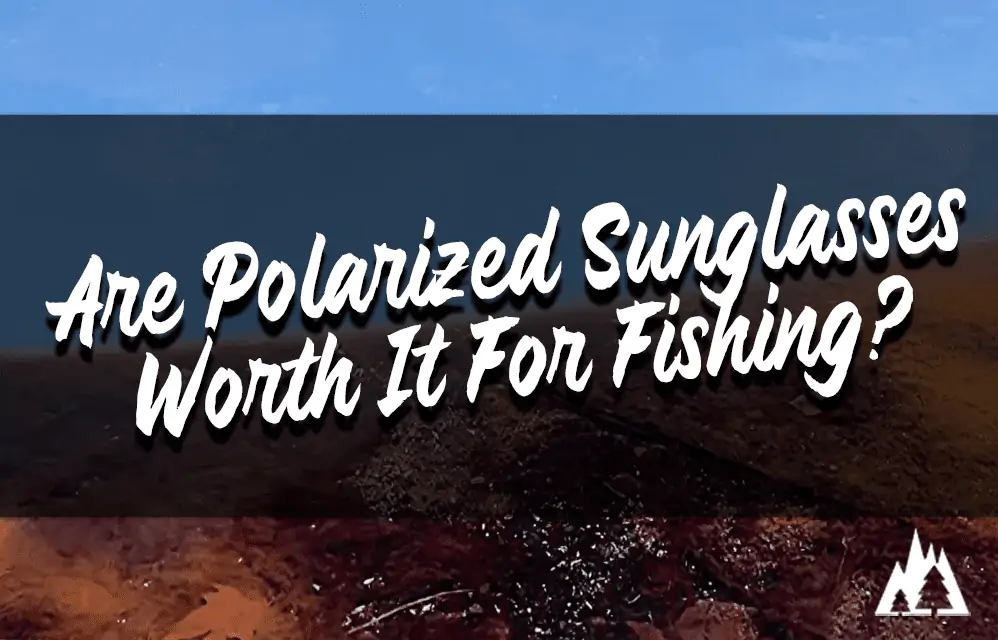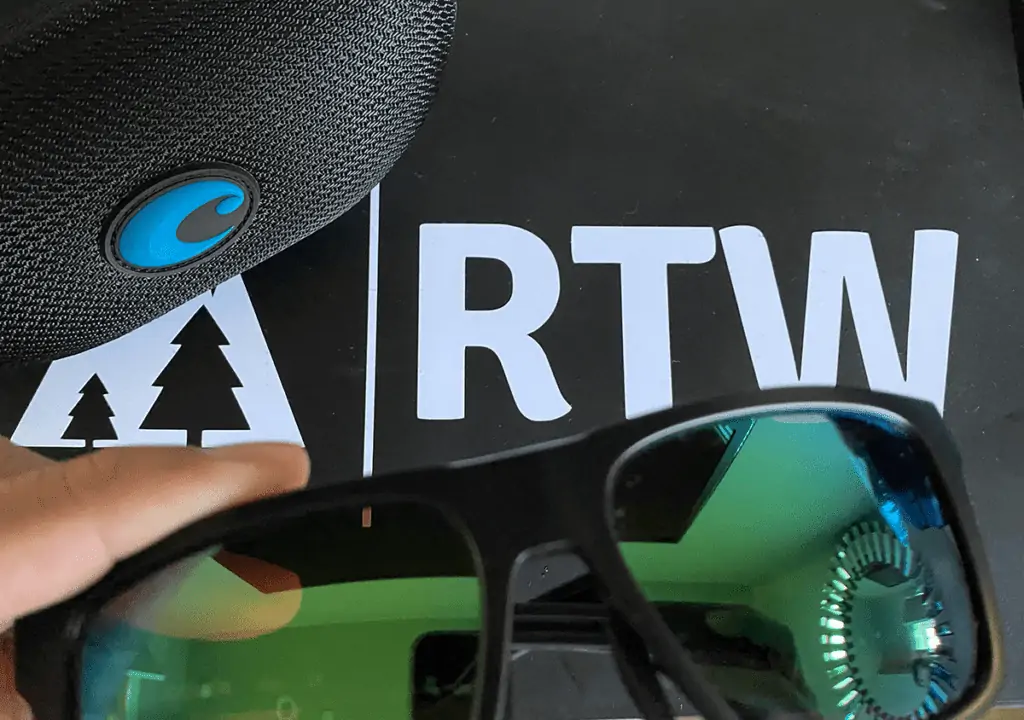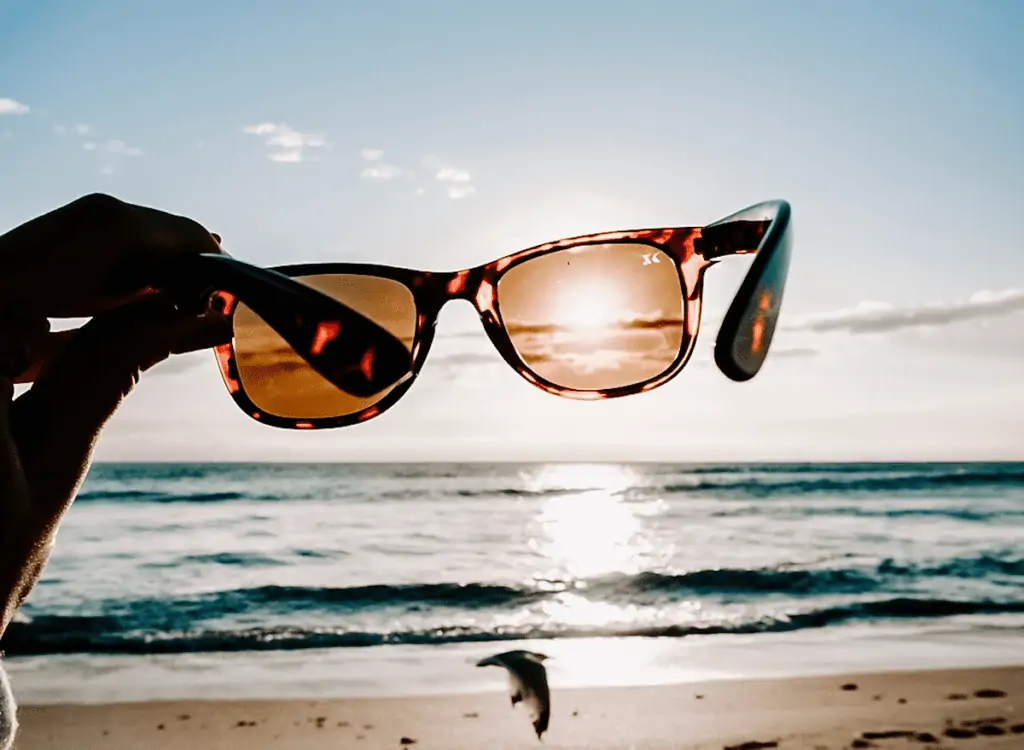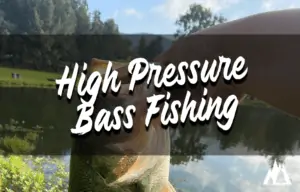Are Polarized Sunglasses Worth It For Fishing?

Are polarized sunglasses worth it for fishing? The short answer is yes. Fishing sunglasses not only cut the glare on the water but also provide UV protection for your eyes.
It’s one of the most underrated fishing gear, in my opinion.
My fishing trips are always, at a minimum, 3 hours long.
When fishing conditions are hot and sunny, I’ll never leave the house without a pair on my face, regardless if I’m fishing or not.
Whether I’m sight fishing at my local pond or on a half-day deep sea charter trip, a good pair of fishing glasses are beneficial in more ways than one.
Many anglers wonder whether the cost of investing in polarized lenses is really necessary to improve their catch rate or visibility while out on the water.
I’ll explain what polarized sunglasses are and how they can benefit your fishing trips, as well as look at different lens options and costs associated with them before giving a few tips on choosing the right pair for your needs.
Let’s dive in.

What are Polarized Sunglasses?
Polarized sunglasses are eyewear designed to reduce glare from surfaces such as water, snow, and glass. They contain a special filter that blocks intense light waves from entering the eyes. This helps improve visibility in bright conditions and reduces eye strain.
Now the science part of it all…
The lenses used in polarized sunglasses are made up of tiny crystals called “polarizers,” which act like microscopic Venetian blinds by blocking certain wavelengths of light while allowing others to pass through.
The result is that only horizontally-oriented light waves can enter the eyes, eliminating most of the glare caused by reflected sunlight off horizontal surfaces like water or pavement.
Benefits of Polarized Sunglasses
Polarized lenses help reduce glare from the sun and water surfaces, making it easier to spot fish in their natural environment.
Take a look below of me showing you the difference in glare when looking through a pair of polarized sunglasses on the water:

Not only that, but they also provide protection from harmful UV rays, which can cause eye damage over time.
Other benefits of wearing sunglasses while fishing:
Improved Visibility
One of the main benefits of polarized sunglasses is improved visibility when out on the water or in other bright environments like snow or sand. The polarization helps filter out reflected light that can make it difficult to see clearly and reduces glare so you can easily spot fish below the water’s surface. This makes them perfect for anglers who need to be able to quickly identify where they should cast their line without missing any potential catches!
Reduced Glare
Another great benefit of polarized lenses is that they reduce glare significantly compared to regular sunglasses. This means you won’t have to squint as much while looking into bright sunlight, reducing strain on your eyes and allowing you to focus better on what’s ahead instead of being distracted by harsh glares off nearby objects such as boats or rocks in the water.
Protection From UV Rays
Lastly, wearing polarized sunglasses provides protection from harmful ultraviolet (UV) rays emitted by the sun, which can cause long-term damage if not properly protected against with proper eyewear such as these glasses. By blocking these dangerous rays, your eyes will stay safe even during extended periods outdoors under direct sunlight – perfect for avid fishermen who spend hours in the sun.

Types of Polarized Lenses
Polarized lenses are a type of lens that is designed to reduce glare from the sun. They are most commonly used in sunglasses but can also be found in prescription glasses and goggles. Polarized lenses work by blocking out light waves that come from certain angles, reducing the amount of glare you experience outdoors.
There are two main types of polarized lenses: linear and circular. Linear polarized lenses block out light waves from one direction only, while circular polarized lenses block out all directions of light waves.
Linear polarized lenses are best suited for fishing, where there is a lot of reflected sunlight off the water’s surface.
Circular polarized lenses provide more protection against glare and may be better suited for activities like skiing or snowboarding, where a lot of bright white snow reflects sunlight in all directions.
Polarized lens technology has advanced significantly over the years, with new coatings being developed to increase their effectiveness at reducing glare even further.
Some newer coatings include:
Polarization-enhancing mirror (PEM) coating: helps to improve clarity by allowing less ambient light through the lens.
- Hydrophobic coating: repels water droplets.
- Anti-reflective coating: reduces reflections on both sides of the lens.
- Scratch-resistant coating: increases durability, so your sunglasses last longer without needing replacement parts or repairs.
Even brands will have glass lenses over plastic lenses to ensure a more scratch-resistant pair of sunglasses.
The cost considerations when purchasing polarized sunglasses vary depending on what type you choose and how many features they have included with them (e.g., PEM/hydrophobic/anti-reflective/scratch resistant). Generally speaking, linear polarized sunglasses will start around $50-$100 USD, whereas higher-end models with additional features can range up to several hundred dollars depending on brand name recognition, etc.
When choosing your pair, it is important to consider factors such as face shape and size, activity level (fishing versus skiing), desired style and color preference, and budget constraints before making any decisions.
This way, you will get the maximum benefit from your purchase. Additionally, check whether they offer UV protection; this should always be present regardless of whether it is sunny or cloudy outside.
Polarized lenses come in various tints and styles, so it’s important to understand their differences before deciding which type is right for you.
Cost Considerations
The most basic polarized lenses start at around $20-$30 USD per pair but can go up to hundreds of dollars for designer frames or higher quality lenses with advanced features like anti-fog coating or scratch resistance.
Generally speaking, if you’re looking for a good pair of polarized sunglasses that will last you many years, it is worth investing in a mid-range option that typically costs between $50-$100 USD per pair.
Suppose you’re starting out fishing and don’t want to spend too much money on eyewear. In that case, other options, such as non-polarized glasses or clip-on filters, attach to regular glasses frames and only cost around $10-$15 USD each. These are not ideal solutions, however, since they do not offer full protection against UV rays nor reduce glare as effectively as polarized lenses do.
When choosing polarized sunglasses, it is important to consider price and quality to get the best value.
I highly recommended looking for reputable brands with good reviews online or asking friends who have experience with different types of eyewear what their recommendations are before making a purchase decision.
Additionally, it is important to ensure the fit is comfortable, so try them on before buying if possible.
When considering the cost of polarized sunglasses, weighing the benefits against the price is important. However, once you’ve chosen a pair that meets your needs, there are additional tips to consider when selecting polarized sunglasses for fishing.
Tips for Choosing Polarized Sunglasses
When choosing polarized sunglasses for fishing, there are several factors to consider, such as lens color, frame size, and fit.
Lens Color
Different lens colors can provide different benefits when it comes to reducing glare on the water. For example, gray lenses will block out most of the light without distorting colors, while amber or copper lenses can enhance contrast in low light conditions like early morning or late evening fishing trips. Choose a lens color that works best with your environment and activity level so you can make the most of your time outdoors.
Frame Size
The right frame size is important when selecting polarized sunglasses for fishing because they must fit comfortably over your eyes while providing adequate protection from UV rays and glare off the water’s surface. Make sure you try on multiple pairs before making a purchase since frames come in various sizes depending on brand and style preferences.
Fit
A good pair of polarized sunglasses should feel comfortable against your face without slipping down or pressing too hard against your skin when wearing them for extended periods outdoors. Look for adjustable nose pads, if possible, so that you can customize how tight or loose they fit around your face depending on your activities at any given moment during an outing.
Finally, consider cost considerations when shopping around for polarized sunglasses. Higher quality brands may offer better protection but also come with heftier price tags than budget-friendly options, so choose wisely based on your needs and wallet.
FAQs
Why do fishermen use polarized sunglasses?
It makes it easier to spot fish and other objects in the water. Polarized lenses also block out UV rays, which can cause eye strain and fatigue while fishing in bright sunlight.
Additionally, polarized lenses help to enhance color contrast so that fishermen can more easily distinguish between shades of blue and green when looking into the depths of a lake or river.
What type of sunglasses is best for fishing?
The best sunglasses for fishing depends on the conditions you’ll be facing. Polarized lenses are a must to reduce glare from the sun reflecting off the water, and they also help you spot fish in deeper waters.
For maximum protection against UV rays, choose glasses with 100% UVA/UVB protection.
If you are out in bright sunlight all day, consider investing in mirrored lenses that block even more light and keep your eyes comfortable while fishing.
Finally, look for frames that fit comfortably around your face and won’t slip when sweating or splashed by waves.
What color of polarized lenses are best for fishing?
The best color of polarized lenses depends on the conditions you’ll be fishing in.
For bright sunny days, gray or brown lenses will provide maximum protection against UV rays while still allowing a good amount of light through.
For overcast days, yellow or amber lenses can increase contrast and enhance visibility by filtering out blue light. Lastly, copper-colored lenses are great for low-light situations like dawn and dusk when less ambient light is available.
Before You Go
If you’re looking for a new pair of shades, I highly suggest you look at my other resource below:






